MELLAART. James. (1965) Earliest Civilizations of the Near East. New York: McGraw-Hill.
MELLAART. James. (1967) Catal Huyuk: A Neolithic Town in Anatolia New York-McGraw-Hill.
MILLER. Jean Baker. (1986) Toward a New Psychology of Women. Boston: Beacon Press.
MOYNIHAM. Martin. (1985) Communication and Noncommunication by Cephalopods. Bloomington: Indiana University Press.
MORTIMER, W. Golden. (1974) History of Coca: The Divine Plant of the Incas. San Francisco: Fitz Hugh Ludlow Library Edition.
MUNN. Henry. (1973) “The Mushrooms of Language.” In Michael J. Harner. ed… Shamanism and Hallucinogens. London: Oxford University Press.
MYLONAS, George E. (1961) Eleusis and Eleusinian Mysteries. Princeton: Princeton University Press.
NARANJO. Claudio. (1973) The Healing Journey: New Approaches to Consciousness. New York: Ballantine.
NILSSON. Martin P. (1964) A History of Greek Religion. New York: W.W. Norton.
NEUMANN. Erich. (1955) The Great Mother: An Analysis of the Archetype. New York: Pantheon.
O'LEARY. De Lacy. (1949) How Greek Science Passed to the Arabs. London: Routledge amp; Kegan Paul.
OMAN. J. Campbell. (1903) The Mystics, Ascetics, and Saints of India. London: T. Fischer Unwin.
OSS, О. Т. and OERIC. O. N. (1976) Psilocybin: The Magic M ushroom Grower's Guide . Berkeley: Lux Natura Press.
OTT. Jonathan. (1985) The Cacahuati Eater: Rumination of an Unabashed Chocolate Eater. Vashon, W.A.: Natural Products Co.
OTT. Jonathan, and BI.GWOOD, Jeremy. eds. (1978) Teonanacati: Hallucinogenic Mushrooms of North America. Seattle: Madrona Publishers.
OTTO. Walter F. (1955) “The Meaning of the Eleusinian Mysteries.” In Joseph Campbell. Eranos Yearbook Number Two: The Mysteries. New York: Pantheon.
OTTO. Walter F. (1965) Dionysus Myth and Cult. Bloonington: Indiana University Press.
PERSSON, Axel W. (1942) The Religion of Greece in Prehistoric Times. Berkeley: University of California Press.
PFEIFFER, John E. (1982) The Creative Explosion: An Inquiry into the Origins of Art and Religion. Ithaca. N.Y.: Cornell University Press.
PHELPS. Janice Keller. and NOURSE. Alan E. (1986) The Hidden Addiction and How to Get Free. Boston: Little, Brown.
RATSCH. Christian. (1984) Ein Kosmos im Regenwald. Cologne: Eugen Diederichs Verlag.
RATSCH, Christian. (1986) Ethnopharmakilogie und Parapsychologie. Berlin: Express Edition GmbH.
RATSCH. Christian, and MULLER-EBELING. Claudia. (1986) Isoldens Liebestrank Aphrodisiaka in Geschichte und Gegenwart. Munich: Kindler Verlag.
REKO, Victor A. (1987) Magische Gife, Rausch-und Betaubungsmittel der neuen Welt. Berlin: Express Edition GmbH.
RENFREW. A. Colin. (1988) Archaeology and Language: The Puzzle of Indo-European Origins. London: Cambridge University Press.
ROBICSEK. Francis. (1978) The Smoking Gods: Tobacco in Maya Art, History and Religion. Norman: University of Oklahoma Press.
RODRIGUEZ. E… AREGULLIN. M… UEHARA. S… NISHIDA. Т… WRANGHAM. R… ABRAMOWSKI. Z… FINLAYSON. A… and TOWERS. G.H.N. (1985) “Thiarubrine-A. A Bioactive Constituent of Aspilia (Asteraceae) Consumed by Wild Chimpanzees.” Experentia 41:419-420.
RULANDUS. Martinus. (1612) A Lexicon of Alchemy or Alchemical Dictionary. Frankfurt: Zachariah Palthenus.
SAMORINI. Giorgio. (1989) “Etnomicologia nell'arte rupestre Sahariana (Periodo delle 'Teste Rotonde').” Boll. Camuno Notizie, vol. 6(2): 18-22. SAUR. Carl. (1973) Man's Impact on the Earth. New York: Academic Press.
SCHULTES. Richard Evans. (1939) “Plantae Mexicanae, II: The Identification of Teonanacati, a Narcotic Basidiomycete of the Aztecs.” Botanical Museum Leaflets of Harvard University 7:37-57.
SCHULTES, Richard Evans. (1973) The Botany and Chemistry of Hallucinogens. Springfield, Mass.: Charles C. Thomas.
SCHULTES, Richard Evans. (1982) “The Beta-Carboline Hallucinogens of South America.” Journal of Psychoactive Drugs 14:205-220.
SCHULTES. Richard Evans, and RAFFAUF. Robert F. (1990) The Healing Forest: Medicinal and Toxic Plants of Northwest Amazonia. Portland. OR: Dioscorides Press.
SETTEGAST, Mary. (1987) Plato Prehistorian. Cambridge: Rotenberg Press.
SHEVOROSHKIN, Vitaly. (1990) “The Mother Tongue.” The Sciences, May/June, pp. 20-27.
SIEGEL, Ronald K. (1977) “Religious Behavior in Animals and Man: Drug-Induced Effects.” Journal of Drug Issues, pp. 219-236.
SIEGEL. Ronald K. (1989) Intoxication. New York: E. P. Dutton.
SPRUCE. Richard. (1908) Notes of a Botanist on the Amazon and Andes (2 vols.). A. R. Wallace, ed.
STAHL, Peter W. (1989) “Identification of Hallucinatory Themes in the Late Neolithic Art of Hungary.” Journal of Psychoactive Drugs 21(0:101-112.
STEVENS, Jay. (1987) Storming Heaven: LSD and the American Dream. New York: Atlantic Monthly Press.
STEVENS. Wallace. (1981) The Collected Poems of Wallace Stevens. New York: Alfred A. Knopf.
SUHR. Elmer G. (1967) Before Olympos. New York: Helios Books.
SZARA. Steven. (1957) Psychtropic Drugs. S. Garattini and V. Ghetti. eds…Amsterdam: Elsevier.
TAYLOR. Bayard. (1855) The Lands of the Saracen. New York: G. P. Putnam.
TREBACH. Arnold S. (1987) The Great Drug War. New York: Macmillan.
VARELA. Francisco J… and COUTINHO. A. (1988) “The Body Thinks: How and Why the Immune System Is Cognitive.” The Reality Club. vol. 2. John Brickman. ed. New York: Phoenix Press.
WADDINGTON. С. Н. (1961) The Nature of Life . London: George Alien amp; Unwin.
WALEY, Arthur. (1958) The Opium War Through Chinese Eyes. Stanford: Stanford University Press.
WALTON. Robert P. (1938) Marijuana: America's New Drug Problem. Philadelphia: J. B. Lippincott.
WARE. James R. (1966) Alchemy. Medicine. Religion in the China of A. D. 320: The Nei Pien of Ко Hung. Cambridge, Mass.: MIT Press.
WASSON. R. Gordon. (1971) Soma: Divine Mushroom of Immortality. New York: Harcourt Brace Jovanovich.
WASSON, R. Gordon. (1980) The Wondrous Mushroom: Mycolatry in Mesoamerica. New York: McGraw-Hill.
WASSON, R. Gordon. (1986) Persephone's Quest: Entheogens and the Origins of Religion. New Haven: Yale University Press.
WASSON. R. Gordon, and HEIM, Roger. (1958) Les Champignons Hallucinogenes du Mexique. Paris: Edition du Musee National d'Histoire Naturelle.
WASSON, R. Gordon, and HEIM, Roger. (1967) Nouvelles Investigations sur les Champignons Hallucinogenes. Paris: Editions du Musee National d'Histoire Naturelle.
WASSON. R. Gordon, and HOFMANN, Albert, and RUCK, Carl. (1978) The Road to Eleusis. New York: Harcourt Brace Jovanovich.
WILSON. Edward 0. (1984) Biophilia. Cambridge, Mass.: Harvard University Press.
WILSON. H. H… trans. (1928) Rig-Veda Sanhita (5 vols.) Poona. India: Ashtekar.
WINDHOLZ. Martha, ed. (1976) The Merck Index (9th ed.). Rahway, N.J.: Merck.
WINN, Marie. (1977) The Plug-In Drug. New York: Penguin.
ZAHNER. R. C. (1961) The Dawn and Twilight of Zoroastrianism. New York: G. P. Putnam's Sons.
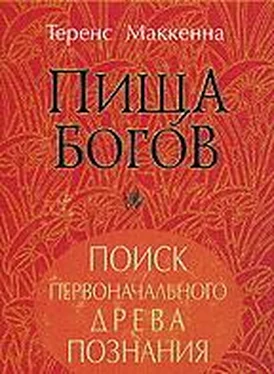
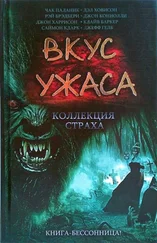

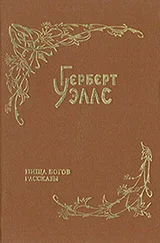
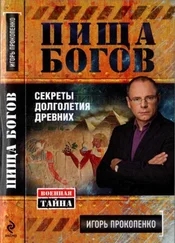
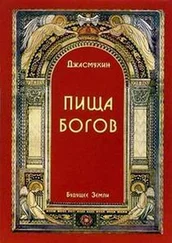
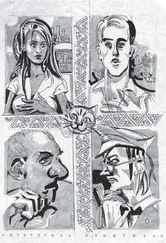
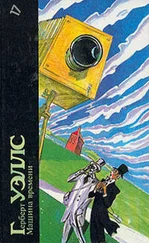
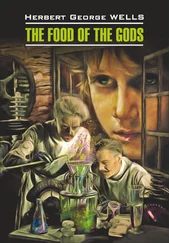
Всё содержание книги - ностальгия о прошлом. Прошлого не вернуть и в этом нет необходимости. В далёком прошлом медицины не было и эту роль выполняли шаманы, их называли по-разному: шаман, знахарь, колдун, ведьма и т.п. И они вылечивали соплеменников. Теперь это делает медицина.
Что касается шаманизма, то автор не знает существа шаманизма, поэтому всё сказанное не имеет смысла, кроме информации о его существовании. О последствиях использования наркотиков говорить не нужно. А что может увидеть наркоман Ответ - то, что видит во сне. А для нормального видения ИНОГО сознание человека должно созреть.
А наркотик взламывает и уродует часть мозга, что и вызывает видения. И это часто не остаётся без последствий.
А делать надо вот что:
1. Выполнить, как утверждает автор, «милицейские требования» Ветхого Завета.
2. Пройти путь посвящения, указанного в Новом Завете.
3. Пройти пути Социализма и Коммунизма – на земле; или Царства Небесного и Царства Божия – по Библии, или шестую и седьмую расу по - восточной религии.
Вот тогда – то человек и перейдёт из тела животного в своё собственное и переселится в свою зону обитания. И тогда не потребуется ни какая травка, ни какой грибок для перехода в другие измерения, И человек сможет свободно посещать любые точки пространства нашей галактики.
Следует иметь в виду то, что одновременного массового перехода не было и быть не может. Каждый человек получал и получает эту возможность индивидуально за свои заслуги, за свои труды здесь на земле. И такие люди есть на земле всегда, но их очень мало. А современное человечество их не слышит и не может их слышать, т.к. главное стремление современного человека - материальное благополучие и секс, а всё остальное - способы их достижения.